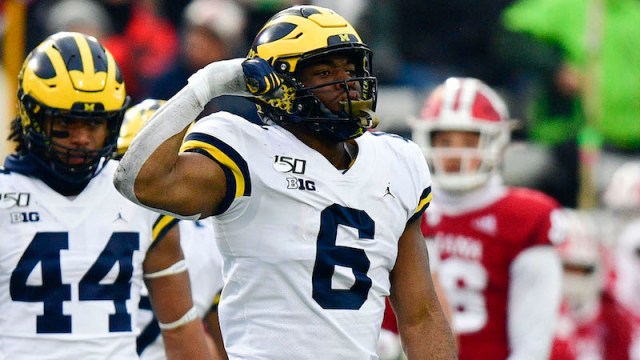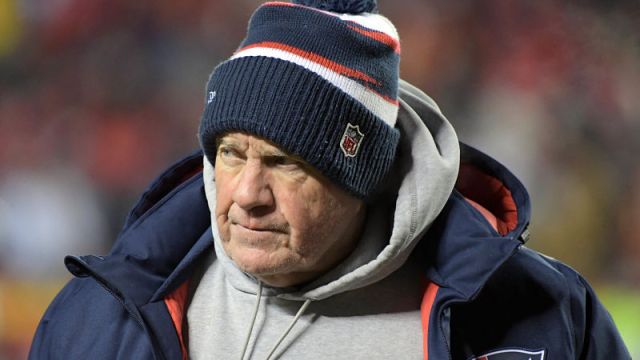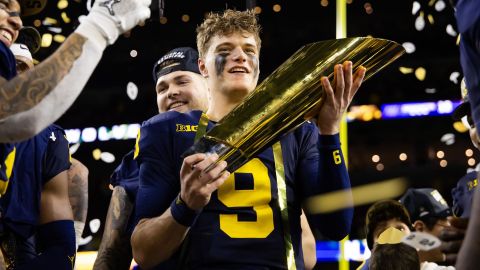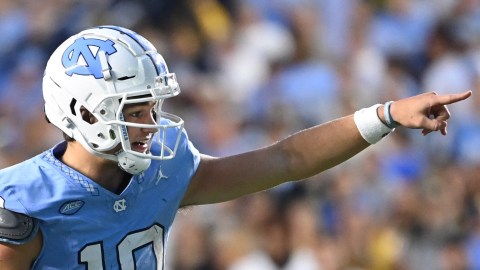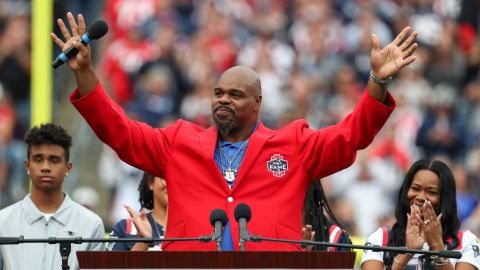Want interior O-line versatility? Dustin Woodard is your guy.
Woodard, the New England Patriots’ 10th and final pick (seventh round, 230th overall) in the 2020 NFL Draft, started at least one full season at left guard (24 starts), right guard (14 starts) and center (14 starts) during his four years at Memphis. He earned first-team All-American Athletic Conference honors at right guard in 2018, was a second-team All-AACer at center in 2019 and didn’t miss a game in his college career.
With the Patriots currently lacking an obvious backup for center David Andrews after losing Ted Karras in free agency, Woodard has an opportunity to parlay his reliability, toughness and ability to play multiple positions into a spot on their 53-man roster.
It’s easy to find similarities between Woodard and Andrews, who went undrafted in 2015 and became New England’s full-time starting center one year later. Both lack the size teams typically seek in linemen, with Andrews measuring in at 6-foot-2, 295 pounds before the 2015 draft (the Patriots’ current roster has him at 6-3, 300) and Memphis listing Woodard at 6-2, 291.
Since he wasn’t invited to the NFL Scouting Combine and had his pro day canceled by COVID-19, Woodard doesn’t have any official height/weight/arm length measurements or testing numbers, making it difficult to compare him and Andrews from an athletic standpoint.
On film, though, the 22-year-old looks like a player who uses technique and tenacity to overcome his physical limitations. And not just overcome — excel.
Woodard, who will enter training camp as the Patriots’ smallest offensive lineman, was Pro Football Focus’ second-highest graded collegiate center in 2019 — trailing only Temple’s Matt Hennessey, who went in the third round to the Atlanta Falcons — and PFF’s highest-graded run blocker at the position.
He was similarly effective at both guard spots, posting the highest PFF grade of any AAC interior lineman in 2018 (at right guard) and posting a conference-best run-blocking grade in 2017 (at left guard). His pass protection was top-notch, too: one sack, one QB hit and five total pressures allowed on 462 pass-blocking snaps last season, per PFF.
Dustin Woodard was the highest graded guard in the AAC in 2018 before moving to center this past season.
He was the #2 graded center in all of college football in 2019.https://t.co/a6S9LDpE9r pic.twitter.com/LBdXTZXa0p
— PFF NE Patriots (@PFF_Patriots) May 3, 2020
Given his size, Woodard could struggle against bigger, stronger NFL defenders — we found several examples of defensive tackles overpowering him at the point of attack — but his style was highly effective against the competition he faced at Memphis.
You wouldn’t typically see Woodard driving opponents 5 yards downfield, but he was adept at using proper angles to turn D-tackles and wall off linebackers, opening running lanes for a Tigers rushing attack that averaged 6.4 yards per carry in 2019.
A few examples (Woodard is No. 53 in each clip):
In pass protection, Woodard displayed an innate knack for putting his man on the ground. Seriously, he did it all the freaking time.
As a seventh-round pick, Woodard won’t be guaranteed a roster spot, but he does have the advantage of being one of the Patriots’ few experienced snappers.
Behind Andrews, who is set to return this season after missing the entire 2019 campaign with blood clots in his lungs, New England’s best option probably is 2019 fourth-round pick Hjalte Froholdt. Froholdt played some center at Arkansas but primarily lined up at guard both in college and last summer.
The Patriots used three of their five Day 3 picks on O-linemen, also nabbing super-sized guard Michael Onwenu and potential tackle-to-guard convert Justin Herron in the sixth round.

